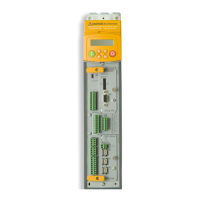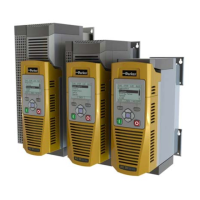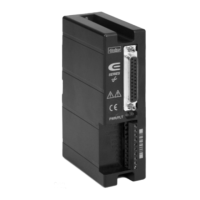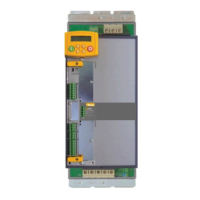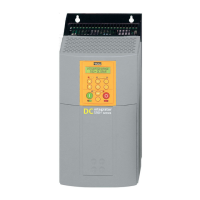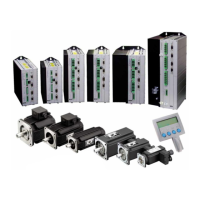DOC-0017-03-EN: AC15 Series - Hardware Installation Manual
DOC-0017-03-EN-B 04.04.2023 41 (125)
3ø Products:
=
3
×
100
÷
(
2 ×
)
Where:
= Line-to-Line Input Voltage (V)
= AC Line Choke Impedance (%)
= Rated Input Current (A)
= Mains supply frequency (Hz)
7.4 Dynamic Braking Resistor
Dynamic Brake Resistors should be used when an application requires regenerated power from the motor
to be dissipated, usually during motor deceleration.
The AC15 Series products are all fitted with an internal brake switch as standard, ready for connection to
an external Dynamic Brake Resistor.
Resistor Power Requirement Calculation
The Dynamic Brake Resistor must be rated to absorb peak braking power during deceleration, as well as
the average power over the complete cycle. These values can be calculated using the formulas below:
Peak Braking Power:
=
0.0055
(
1
2²
)
Where:
Average Braking Power:
=
Where:
= Average Braking Power (W)
Resistor Selection
Once the peak and average braking power of the application is calculated, an appropriately rated resistor
will need to be selected. The resistor value will need to be higher than the minimum resistor value specified
for that power stack.
Refer to ‘Chapter 13: Technical Information’ for minimum resistor values that can be used with each power
stack.

